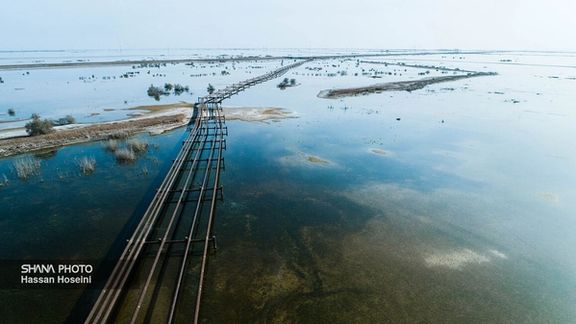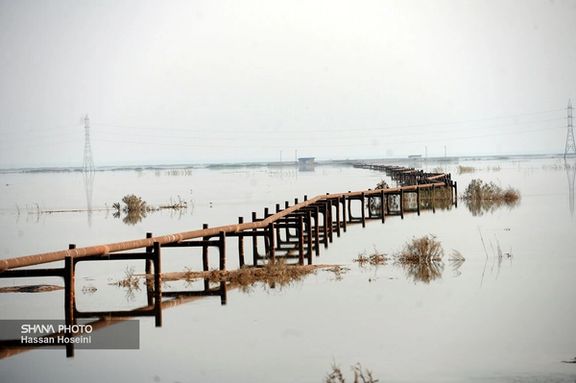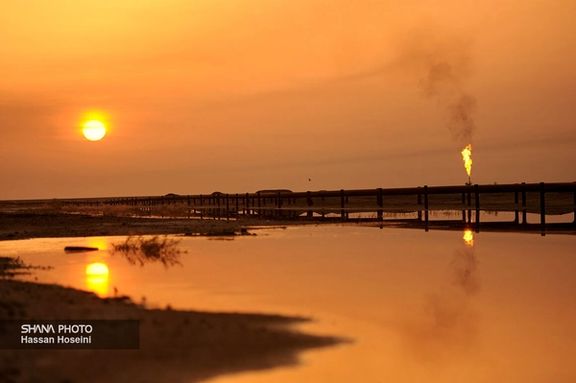Development Of New Oil Field Threatening Iranian Marshlands

Development of Sohrab Oil Field in Iran's oil-rich southwestern Khuzestan Province has raised serious environmental concerns about the destruction of Hoor al-Azim Marshlands.

Development of Sohrab Oil Field in Iran's oil-rich southwestern Khuzestan Province has raised serious environmental concerns about the destruction of Hoor al-Azim Marshlands.
Due to ecological hazards, the environmental department of Khuzestan has objected to the implementation of the project. An official of the department, Sirous Karimi, told Etemad newspaper Wednesday that environmental evaluation of the project is ongoing and a permit for development of the field is still pending.
Mohammad Javad Ashrafi, a former director general of Khuzestan’s department of environment, also told Etemad newspaper that he development of the oil field has been put on the agenda due to the policy of giving priority to the development of oil and gas fields shared with Iraq.
According to Ashrafi, the department rejected the construction of 25 platforms and 35 wells as originally proposed by the National Iranian Oil Company (NIOC) which required the draining of fifteen separate locations covering an area of around 30 hectares of marshes.

The NIOC then modified its proposal and reduced the locations to six areas of around 3 hectares each which the department has also not accepted, he said.
Hoor al-Azim, part of the complex of Hawizeh marshes that straddle the Iran-Iraq border, is home to several endangered bird species, unique water plants, and fish. Only one-third of the marshes are on the Iranian side of the border. The marshes play a significant role against dust storms that have plagued southwestern provinces of Iran in the past two decades.
Over half of the Iranian part of Hoor al-Azim, once over 60,000 hectares, has dried up since the late 1980s because of draughts, extraction of water for agriculture, construction of roads and dykes, the many dams built on Karkheh River on the Iranian side of the border and the change of Tigris River’s course on the Iraqi side.
Sohrab Oil Field is in northern Dezful (Abadan Plain) in the vicinity and parallel to Iran-Iraq border, north of Azadegan oil field. It has been detached from Azadegan oil field by an embayment.
During President Ebrahim Raisi’s visit to the province in late April, the managing director of NIOC, Mohsen Khojasteh-Mehr, said operations to develop the oil field had begun.

Representing the NIOC, the Petroleum Engineering and Development Company (PEDEC) is managing the project and the Tehran-based Dana Energy Company is in charge of developing the field, he was quoted by the oil ministry’s news agency Shana on April 28.
The field is estimated to hold 2 billion barrels of oil in place. According to Shana, the first stage of development operations is expected to help extract 30,000 barrels per day (bpd) from the field based on estimates, targeting cumulative production of 160 million barrels of crude oil over 20 years.
Discovered in 2012, the NIOC drilled the first exploration well, Sohrab-1, in the same year. A second exploration well followed in the southern part of the field in 2014.
In August 2021, Ahmadreza Lahijanzadeh, a deputy of the department of environment, said a Japanese company originally chosen to develop the field was prepared to carry out the project by using an advanced technology to avoid draining the marshes but the project was eventually given to a Chinese company that undertook to implement it at 20 percent cheaper but at the cost of drying the marshes.